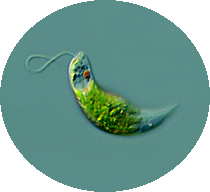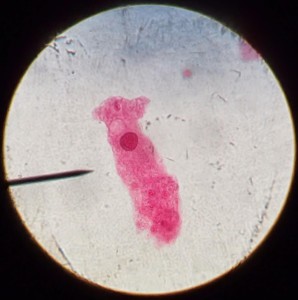The unit on protists is one that I used to dread, mainly because the world of microscopic organisms does not ever seem particularly interesting to students, where only a small percentage of them seem to care about the Ameba and Paramecium. Furthermore, studying protozoa seems to be disconnected from real world applications.

Laboratory investigations can serve to make a connection between those pictures and real live organisms – but that’s only if the students can master the microscope procedures and focus in on a real protist and not a speck of dust or an air bubble. That is your challenge as a teacher.
The first step is to create that “oooh” moment when students are amazed and surprised by something. This moments are of course, short-lived, but they do help motivate and encourage students. Do not start your protist lab with something difficult to find – start it with something that’s easily visible.
The Euglena and Amoeba
My favorite is the Euglena. It is not the largest of the microorganisms, but most sample jars will contain so many of them that they simply can’t be missed even by the most amateur biologists. I will hold up the jar of euglena, which will usually have a green tinge and ask what they think makes the water green. Students are then directed to put a drop of the water on a slide (with a cover slip) and look at it under the microscope. There is your “ooooh” moment. ( See worksheet on algae lab )
Paramecium and Ameba while larger and arguably more interesting than the euglena are the next object of study. At this point, be sure to tell students that the organisms are a little bit more difficult to find – paramecium because they move so fast and amoeba because they move so slow.
Having preserved slides are a good way to start this exercise so that students at least know what they are looking for. I also find the microscope camera hooked up to computer’s usb port to be extremely valuable in helping students identify the actual specimen they are looking for.

Tell the students to be patient (and remind yourself to be patient also) in looking for the organisms. You could even enlist older students to come into your class to help you circulate around the room and help younger students with the focusing of the microscopes. My AP biology students actually like coming in to help with the freshman.
Hopefully your patience and their efforts will pay off – I personally think there is nothing more amazing and “ooooh”-worthy than watching an amoeba move. Below is the amoeba I captured with my microscope video camera while the students were watching.

